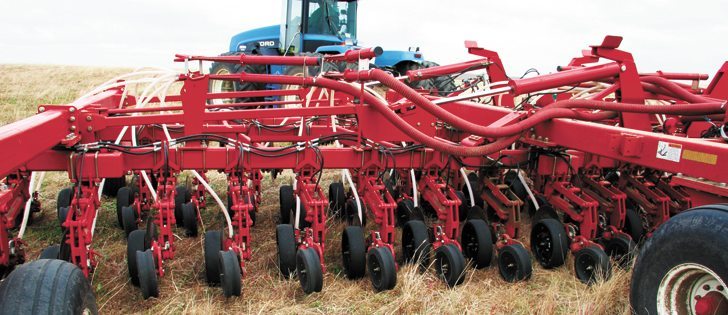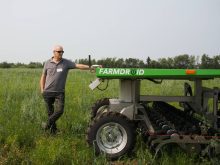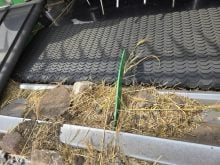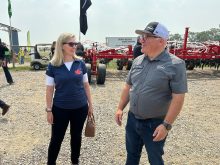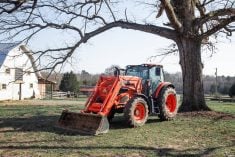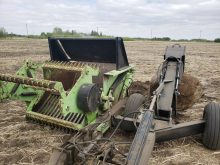Walking axle technology | Reduced cutting angle produces narrow, easy to close furrows at higher speeds
A new disc drill designed to work faster and boost seed placement accuracy is expected to be available soon to prairie farmers.
Morris Industries has been re-searching and designing their new depth controlled opener system since 2009. It tried nine different opener systems on a plot drill in a variety of field conditions.
Ultimately, it settled on a 20 inch flat disc connected to a 13-inch double-shouldered packer by a walking axle, which obtains down pressure from a hydraulic system similar to what is on the company’s contour drill.
Read Also
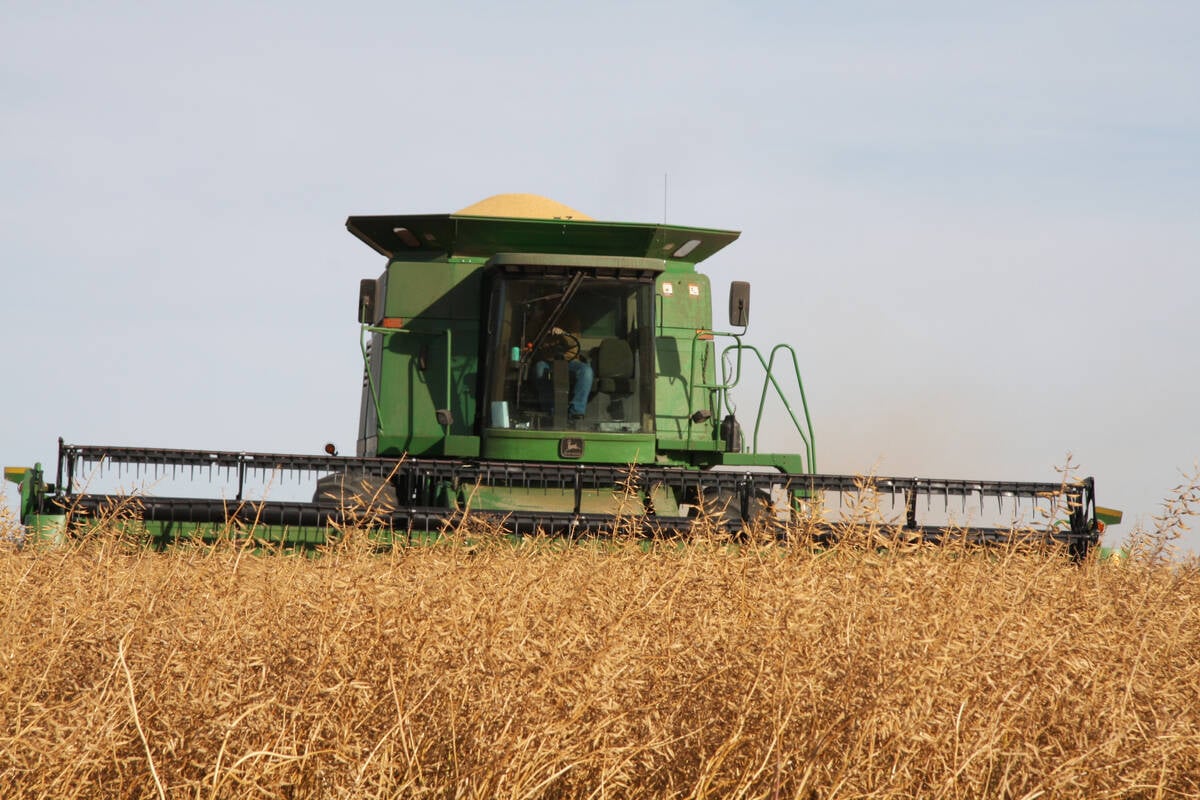
Mustard processor expands in southern Alberta
$30 million expansion for southern Alberta mustard facility adds milling capacity to largest supplier in the world of value-added milled mustard products
Don Henry of Morris Industries said vertical discs can have problems penetrating in some soil conditions.
However, unlike competitors that pile weight on to get the discs to stay at depth, Morris uses walking axle technology, in which disc and packer work against one another.
“The disc is connected on a walking axle to packing wheel,” Henry said. “It pivots in the middle, so if the front disc wants to ride out of the ground the back packer will force it back in.”
The walking axle allowed Morris to reduce the cutting angle the discs need to penetrate the soil. As a result, Henry said, there is less smearing on the disc and the furrow is easier to close.
To apply pressure on the opener, Morris uses a hydraulic down pressure system.
“There is a cylinder on every one of the disc openers. We use an accumulator in the system. So once you put the unit into the ground with your tractor, you can release your remote and then oil is exchanged through the accumulator as it goes over the contours of the ground.”
To improve seed placement accuracy the easily adjustable gauge wheels are on the discs where seed placement takes place.
The gauge wheel has spokes, allowing mud to flow through in wet conditions preventing build up, which can stop the disc, Henry said.
To reduce seed bounce, the seed table is backward swept to the disc so it drops seed in the same direction of travel.
Last summer, Morris fielded four prototype drills: one 40 foot drill in Kazakhstan and one in East Australia, as well as a 40 and 60 foot drill in Canada.
Robert Misko farms near Bield, Man., and he seeded about 3,500 acres into wheat, canola and corn with the 60 foot prototype last spring.
The seeder allowed Misko to seed at about 7.5 m.p.h., and seed up to 60 acres per hour.
“You can really pile on the acres with that machine,” Misko said.
“I was impressed. There is no real downside to it. You can seed fast, field finish is very smooth and seed placement is much more accurate than a shank.”
There is no shortage of stones or awkward fields in the Bield hills, but Misko said the drill performed well in challenging conditions.
“They don’t actually apply that much force in the ground. The disc can come out quickly and go up and over when it hits a stone,” Misko said.
“It goes through the stony stuff and up and down trough the hills and dips and stays consistent. You will probably do more in an hour than an 85 foot drill with shanks. A 60 foot drill is a big machine, but it’s much better then an 85 foot or 90 foot drill when you’re trying to get into difficult places.”
Misko said independent openers that have the gauge wheel two or three feet behind the opener will never be as accurate in terms of depth control as drills like this model that have the gauge wheel right beside the coulter.
“When you hit a lump the shank goes right through it before the tire can pick it up. Then when the gauge wheel does hit the lump, it picks the shank up two feet past where it needed to be brought up,” Misko said.
“This machine has a gauge wheel right beside the disc, so wherever you set it at, that’s where it sits at.”
Morris is selling 10 units around the world this spring, and plan on being in full commercial production by the spring of 2014. It will be producing 40, 50 and 60-foot models, which will be offered with 7.5, 10 and 15 inch row spacing.
“We think the machine is ready to go, but we want to put a manageable number of them out there in case there is something we haven’t seen yet, so we will be able to react to it in a small way and make the changes necessary,” Henry said.




